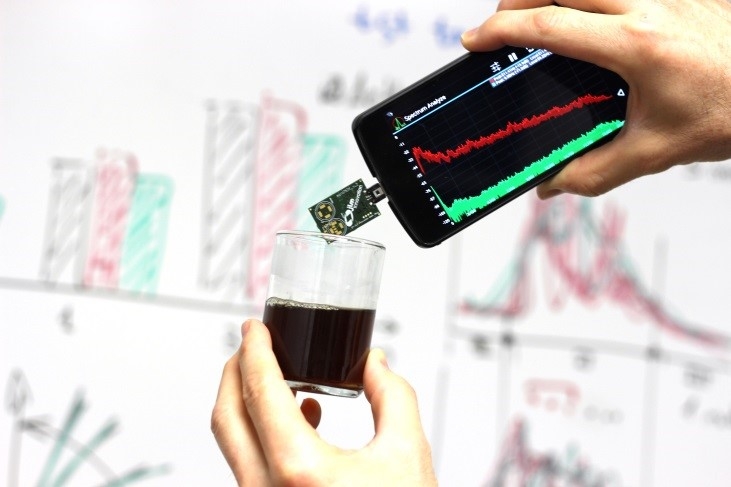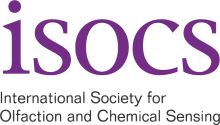H. Troy Nagle, North Carolina State University
Susan S. Schiffman, North Carolina State University
Jan Mitrovics, JLM Innovation GmbH
Santiago Marco, Universitat de Barcelona
Ricardo Gutierrez-Osuna, Texas A&M University
1) Introduction:
We are pleased to announce the creation of Sniffest, the student competition for machine olfaction. Sniffest seeks to attract new talent to the machine olfaction community and advance the field by promoting practical and original solutions to odor measurement problems. The first edition of Sniffest will take place during the ISOEN conference, to be held in Montreal on May 28-31, 2017. Sniffest will provide students with sensors, hardware and software tools to design and build their own instruments, and the opportunity to showcase them at ISOEN 2017.
2) Eligibility:
To be eligible to participate in the event, students must be enrolled in an undergraduate or graduate degree at an accredited university, and must be sponsored by a senior researcher (e.g., faculty mentor, industry collaborator). Students interested in participating must submit an application to [email protected] by December 31, 2016. The application must include the following information:
- Team name (choose something suggestive or unique),
- Affiliation (name of the school),
- Team roster (name of the students),
- Sponsor (name and contact information), and
- A brief narrative (500 words) of the team’s qualifications, motivation to compete, and proposed solution
The sponsor will be asked to provide a letter of recommendation. The letter should state the capabilities of the team, resources (e.g., equipment, facilities) that will be made available to the team, and commitment to cover travel and lodging expenses for at least one member of the team.
A team of technical experts will review applications and invite a small number of teams to participate. Selections will be based on the team’s qualifications, originality and feasibility of the solution, and the endorsement from the sponsor. Invitations will be announced by January 15, 2017. Teams will have one academic semester to design, build and test their instrument.
3) Toolkit
In order to level the playing field, Sniffest will provide –at no cost—a standard toolkit to each selected team. The toolkit will include a gas sensor board (miniMOX; JLM Innovation GmbH; see Figure 1) and data acquisition libraries for Python. Participating teams can choose to use (at their own expense) their own odor delivery system, computing platform (e.g., smartphone, laptop) and software libraries. However, each team must use the gas sensor board included in the toolkit; no additional sensors may be used.

Figure 1. MiniMOX sensor board that will be provided to participants (smartphone will not be included)
4) The Event
The first edition of Sniffest will honor a culinary tradition in Montreal: cheese. On Day 1 of the conference, the teams will be provided with free samples of cheeses that are local to Montreal. The teams will then have one and a half days (Day 1, and the morning of Day 2) to optimize their odor-sampling protocol and calibration models.
The competition will take place in the afternoon of Day 2, immediately after the ISOEN panel discussion. The competition will consist of two rounds: a qualification round, and a final round. In the qualification round, the teams will be provided with 9 samples: 6 of them from one type of cheese, and the other 3 samples being outliers (i.e., samples from one or several other types of cheese). The teams will have 20 minutes to identify which 3 of the 9 samples are outliers. Teams that correctly identify the 3 outliers will qualify for the final round. The final round will follow a similar format, but with a more challenging outlier-detection problem. In the event of ties, preference will be given to teams with the shortest sample-testing time and the most mobile design.
Each team will be provided with a booth (10x8 feet) to set up their equipment. Teams are encouraged to engage with the audience by preparing live demos of their system and a poster presentation of their design. The top three teams will also have an opportunity to present their design in an oral presentation on Day 3 of the conference.
5) Financial Support
ISOEN does not have financial resources to cover travel and lodging expenses for participants in the competition. However, we will provide free registration for one student per team and a 50% discount of the student registration rate for additional team members wishing to attend. In addition, a limited number of travel grants ($500/team) will be awarded to outstanding teams from developing nations, as defined by the IEEE.
6) Q&A
What if I am not selected or missed the deadline? You may still participate in the competition. However, only those teams that have been selected will be eligible to receive the toolkit. If you decide to purchase your own toolkit and participate, please let us know one month prior to the conference so we can allocate space for your team (on an as-available basis).
Can I bring my own sensors or sensor boards? To level the playing field, all teams must use the same type of sensors and the official sensor board included in the toolkit. You may purchase a miniMOX board from JLM Innovation. No other sensors or sensory information may be used.
Can I use more than one gas sensor board? To level the playing field, all participants must use a single miniMOX sensor board.
Can I use a preconcentrator? Yes, you may use a preconcentrator or any other sample extraction technique, provided that it meets the time constraints of the event (see section 4). Likewise, you can use static or dynamic headspace analysis.
What happens if the sensors get damaged? The gas sensor board uses commercial sensors, so in principle you may purchase new sensors to replace those that got damaged. However, before you attempt to repair the board yourself, we ask that you contact the manufacturer with a description of the problem.
What type of computing platform can I use? You are free to use any computing platform, including embedded computers (e.g., Arduino, Raspberry PI), mobile devices (e.g., smartphones, tablets) or laptops. However, we encourage teams to design for portability, since that is one of the evaluation criteria that will be used; see section 4.



